Scientific name Caligo Rank Genus | Higher classification Brassolini | |
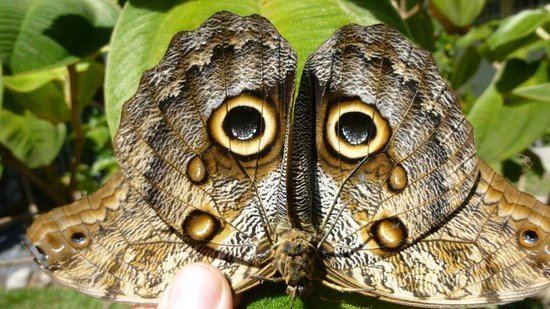 | ||
Similar Butterfly, Butterflies and moths, Insect, Caligo eurilochus, Caligo memnon | ||
Caligo eurilochus brasiliensis owl butterfly brassolini
The owl butterflies, the genus Caligo, are known for their huge eyespots, which resemble owls' eyes. They are found in the rainforests and secondary forests of Mexico, Central, and South America.
Contents
- Caligo eurilochus brasiliensis owl butterfly brassolini
- Creature clip owl butterfly metamorphosis in time lapse from caterpillar to butterfly
- Species
- Functions of the wing pattern
- References
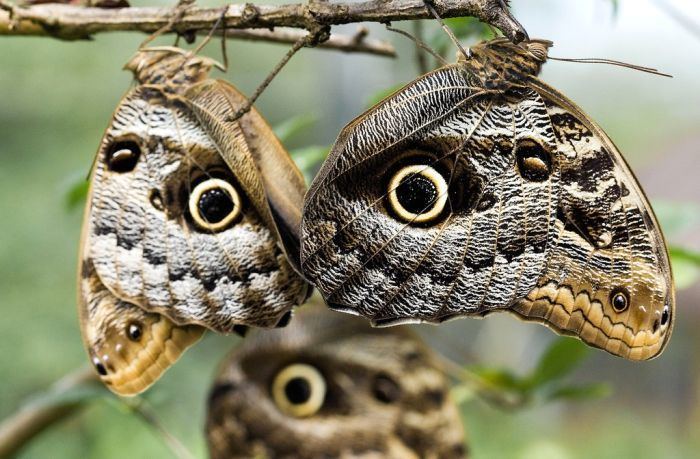
Owl butterflies are very large, 65–200 mm (2.6–7.9 in), and fly only a few meters at a time, so avian predators have little difficulty in following them to their settling place. However, the butterflies preferentially fly in dusk, when few avian predators are around. The Latin name may possibly refer to their active periods; caligo means darkness.
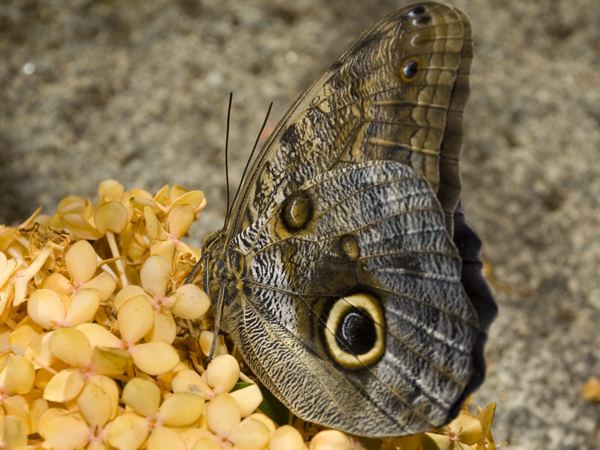
Some owl butterflies form leks in mating behavior.
Creature clip owl butterfly metamorphosis in time lapse from caterpillar to butterfly
Species
Listed alphabetically within groups:
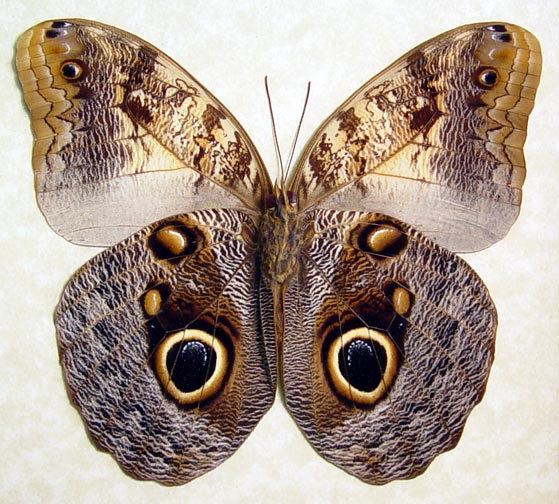
There are some twenty species in this genus, which can be divided into six groups that might constitute subgenera. Some species are of uncertain placement with regard to these groups, however:
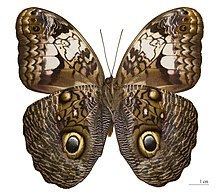
Functions of the wing pattern
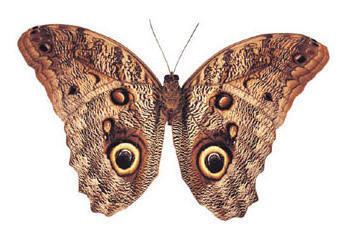
The underwing pattern is highly cryptic. It is conceivable that the eye pattern is a generalized form of mimicry. It is known that many small animals hesitate to go near patterns resembling eyes with a light-colored iris and a large pupil, which matches the appearance of the eyes of many predators that hunt by sight. The main predators of Caligo are apparently small lizards such as Anolis.
According to the Batesian mimicry theory the pattern on the wings of Caligo resemble the head of a predator like a lizard or an amphibian. It should deter predators while resting, feeding, mating, or emerging from the pupa.
The role of eyespots as antipredator mechanisms has been discussed since the 19th century. Several hypotheses are suggested to explain their occurrence. In some butterflies, particularly Satyrinae (such as the gatekeeper butterfly and the grayling), it has been shown that ocelli (eyespots) serve as a decoy, diverting bird attack away from the vulnerable body, and towards the outer part of the hindwings or the forewing tip.
Research of Stevens et al. (2008), however, suggests that eyespots are not a form of mimicry and do not deter predators because they look like eyes. Rather the conspicuous contrast in the patterns on the wings deter predators. In this study, however, the influence of surrounding forms, like the head region of a predator, was not tested. Also the question why animals evolved such complex imitations of other species is left unanswered.
